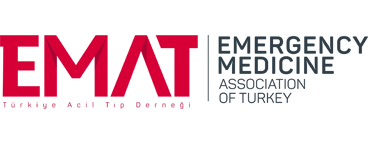Can a stingray tear a tendon? A case report of delayed Achilles rupture following envenomation
Jacob Stibelman , Moamen Elhaddad
, Moamen Elhaddad , Alexander Carrillo‑Kashani
, Alexander Carrillo‑Kashani , B. David Massaband
, B. David Massaband
Cedars‑Sinai Medical Center, Los Angeles, California, USA
Keywords: Achilles tendon rupture, marine envenomation, soft‑tissue infections, stingray injuries
Abstract
Stingray injuries, though common in coastal regions, rarely result in severe musculoskeletal complications such as tendon rupture. This case report presents the first documented instance of a 61 year old male who sustained a stingray injury to the Achilles tendon, initially masked by a concurrent infection, leading to a delayed diagnosis and surgical repair. The patient presented to urgent care 5 days postinjury with pain, erythema, and chills, and was treated for a soft tissue infection. Persistent symptoms prompted a referral to the emergency department (ED), where magnetic resonance imaging revealed a complete Achilles tendon rupture with associated infection. Surgical repair was delayed until the infection resolved, and a V Y gastrocnemius advancement was performed 9 weeks postinjury. The patient achieved full recovery at 1 year follow up. This case underscores the importance of a high index of suspicion for musculoskeletal injuries in marine trauma, the role of advanced imaging in the ED, and the need for interdisciplinary management to prevent long term complications. Emergency physicians must consider tendon injuries in patients with persistent symptoms following stingray envenomation, ensuring timely diagnosis and treatment to optimize outcomes.
How to cite this article: Stibelman J, Elhaddad M, Carrillo‑Kashani A, Massaband BD. Can a stingray tear a tendon? A case report of delayed Achilles rupture following envenomation. Turk J Emerg Med 2025;25:313-6.
This study was conducted in accordance with institutional ethical guidelines. IRB approval was not required for a single‑patient case report.
The authors certify that they have obtained all appropriate patient consent forms. In the form, the patient has given his consent for his images and other clinical information to be reported in the journal. The patient understands that his name and initials will not be published and due efforts will be made to conceal his identity, but anonymity cannot be guaranteed.
• Conceptualization: BDM, JS
• Data Collection: JS, ME, ACK
• Analysis: ME, JS, ACK
• Manuscript Writing: ME, JS, ACK
• Review and Editing: ME, JS, ACK, BDM.
All authors have reviewed and approved the final manuscript and take responsibility for its content.
There are no conflicts of interest.
None.

